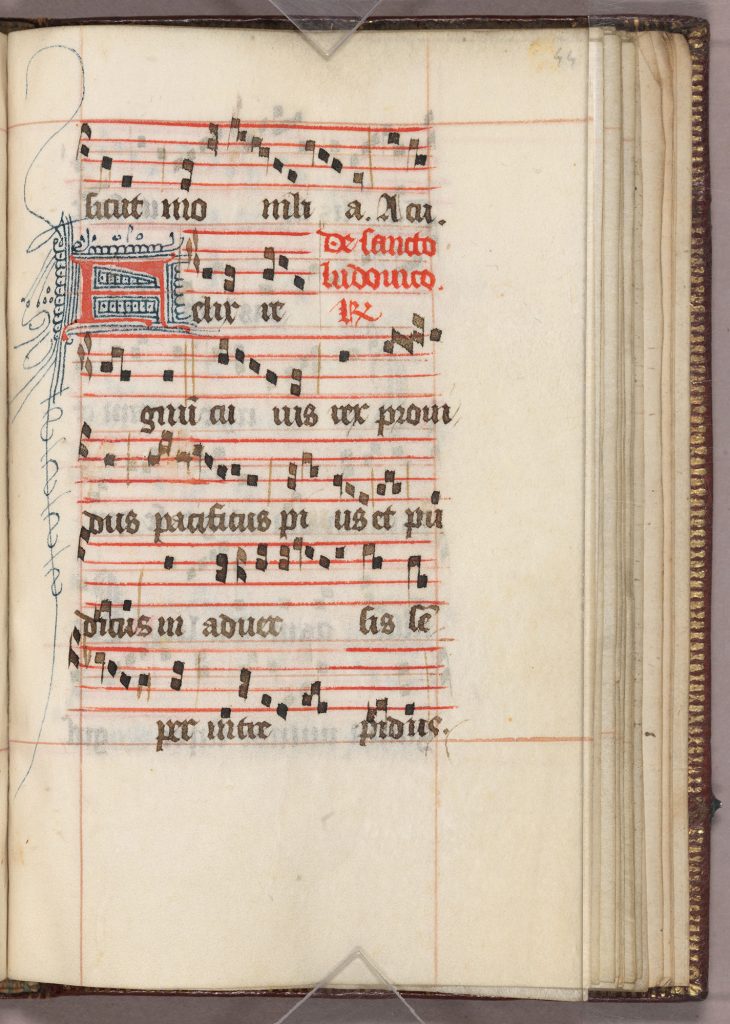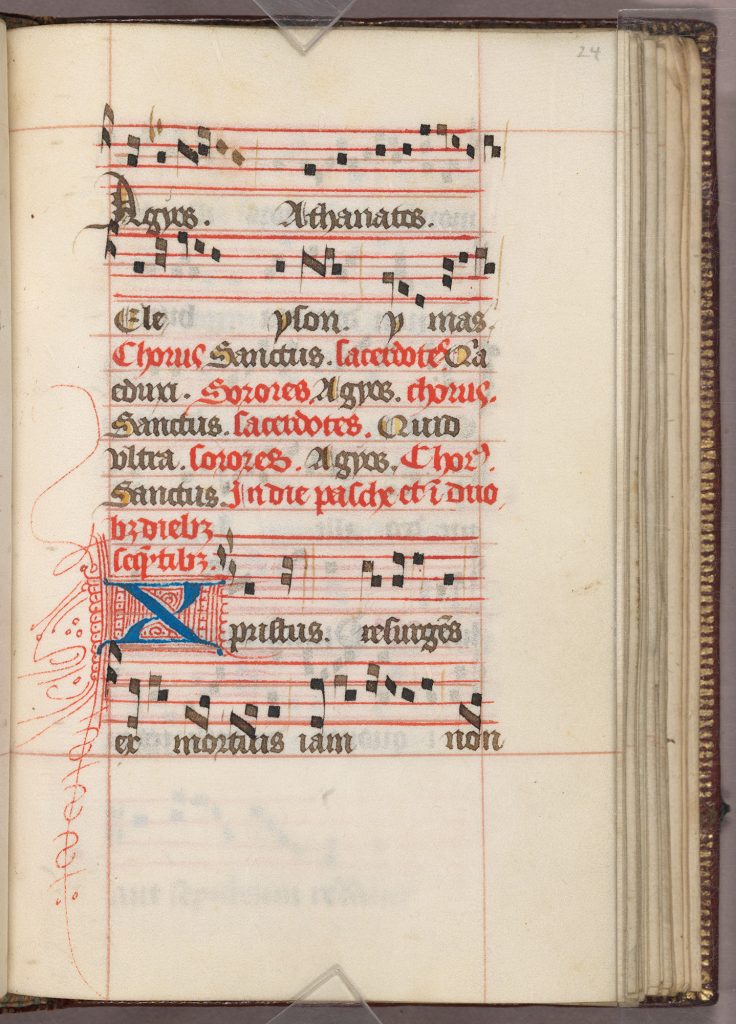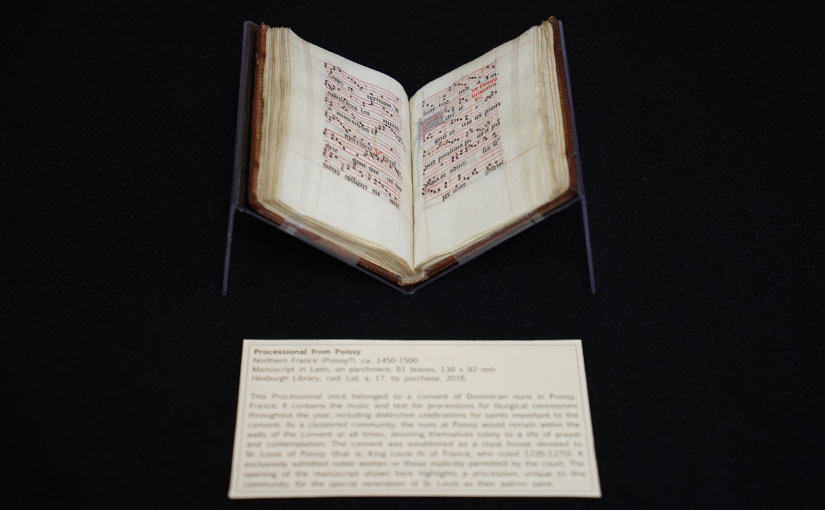by Kristina Kummerer, Ph.D. student in the Medieval Institute
The February-March Spotlight, A Choir Book for Medieval Nuns, highlights one item from the Hesburgh Library’s Special Collections in order to showcase the activities of women religious in the Middle Ages. It features a small fifteenth-century manuscript from Poissy, France, which once belonged to a convent of Dominican nuns devoted to St. Louis (that is, King Louis IX of France, who ruled 1226-1270). This manuscript, called a Processional, would have been used by the nuns at Poissy as they moved through the ceremonial space in liturgical celebrations throughout the year.

Each member of a procession likely held her own book as they processed. Nuns at Poissy, typically noblewomen, often personalized their Processionals with elaborate paintings of their personal patrons, family coats of arms, or convent community. Unlike most other surviving Processionals from this convent, of which there are many, this manuscript is surprisingly lacking in ornate decorations. Even on celebrations unique to their community, such as the Procession for the feast day of St. Louis, the decorations are standard for the genre. This, along with an ownership mark from the seventeenth century, may indicate that this Processional was a general community book under care of the chantress – the appointed musical leader of the liturgy – rather than personally owned.

Even within a women’s community, the foremost leadership roles in the liturgy were primarily held by the male religious who oversaw the convent and its care. However, at the convent in Poissy, the nuns held an explicit liturgical role in certain ceremonies, including processions. This can be seen in this Processional’s rubrics (red-ink liturgical instructions).


For example, on Good Friday, after two priests (duo sacerdotes) sang Christ’s words in a ceremonial recapitulation of the Passion, this manuscript designates that two sisters (due sorores) sang a part assigned typically to male deacons. The choir (chorus) responded afterwards. Since it was unusual to include women as liturgical leaders, these rubrics indicate that women regularly used this manuscript and emphasize their agency and participation within the liturgy.
This exhibit was curated by Kristina Kummerer, a Ph.D. student in the Medieval Institute, as part of a curatorial assistantship in Rare Books and Special Collections. It can be viewed in 102 Hesburgh Library from 9:00 am – 5:00 pm on weekdays.
